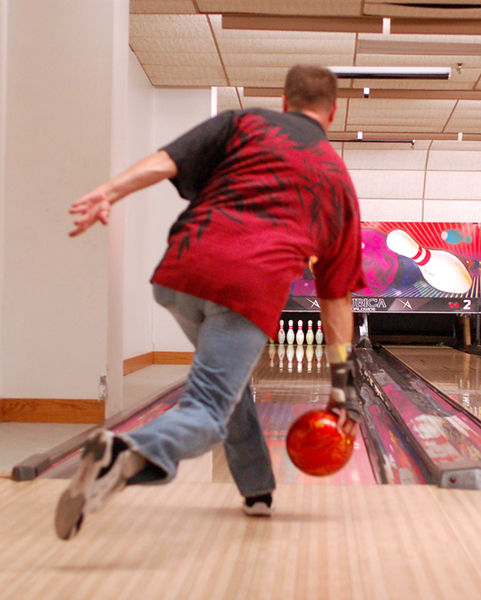In the sport of ten-pin bowling, there are many different ways in which to deliver the bowling ball in order to advance it toward the pins in an accurate and powerful manner. Generally, there are three basic forms of 10-pin bowling. The most basic form is known as stroking, which is the most classic form. The most powerful form is known as cranking, which imparts great leverage and maximum rotation on the ball, but sacrifices accuracy. In between the two is the domain of the tweener, who has characteristics of both, but does not truly fit into either category. A well-known variant of "tweening" is the power stroker.
Bowlers using a high backswing (shown) are generally considered crankers.
A spinning movement of the bowling ball will actually spin away from the 1-pin (right-hander) as it hits it, and then continues the left-to-right direction by hitting the 3, 6 and 10 pins. This type of hit causes a domino effect on the entire rack.
Ten-pin bowling is a type of bowling in which a bowler rolls a bowling ball down a wood or synthetic lane toward ten pins positioned evenly in four rows in an equilateral triangle. The objective is to knock down all ten pins on the first roll of the ball, or failing that, on the second roll. People approach modern ten-pin bowling as either a demanding precision sport or as a simple recreational pastime.
Conventional delivery. Finger position at release can induce side rotation causing the ball to hook (curve).
Delivery styles often involve a long follow-through and widely extended balance arm and leg. (shown: Clara Guerrero)
An 1895 advertisement for bowling lockers (price: $6.00 each section) suggests the attire and facilities used by bowlers of the era.
Bowling alley at the Pleasant Beach Hotel, Bainbridge Island, Washington (c. 1898)






